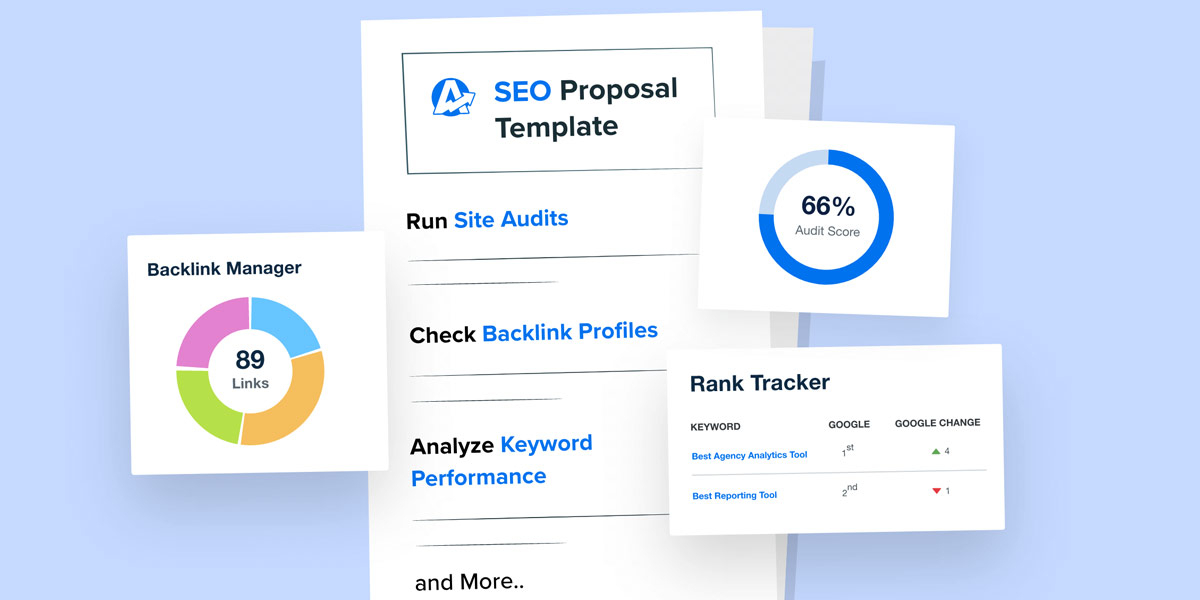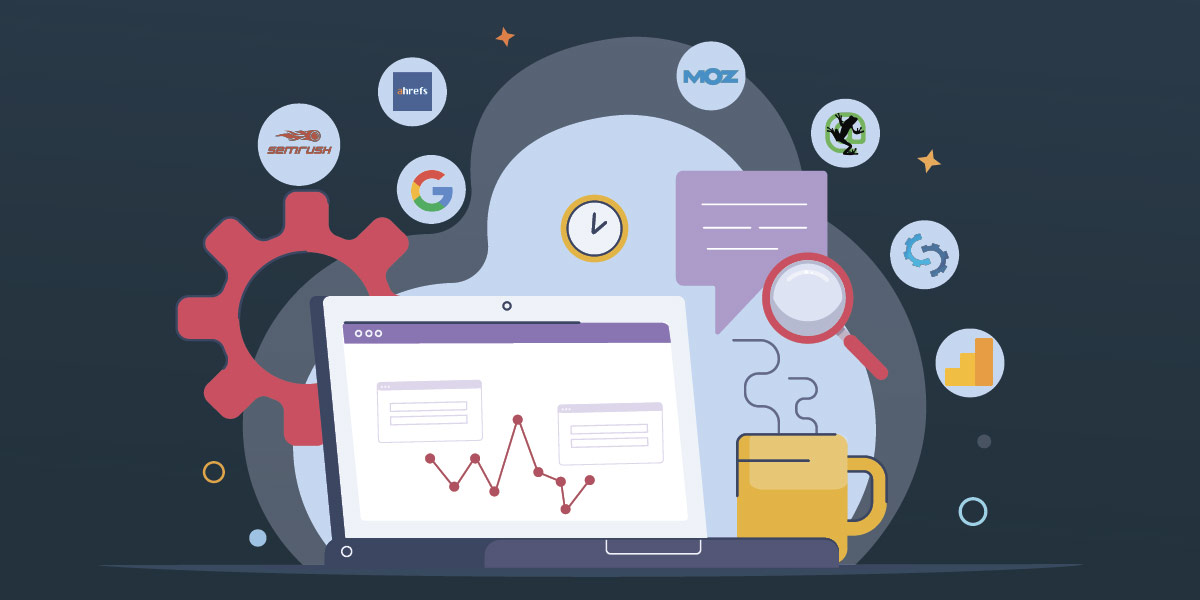SEO Site Analysis: Unlock Powerful Insights into Your Website’s Performance

Are you looking for the key to unlocking powerful insights about your website’s performance? If so, an SEO site analysis can be the answer. Discover how an SEO analysis can help you understand your website and make the most of its potential. Read on to find out more!

Unlock Powerful Insights into Your Website’s Performance with an SEO Site Analysis
What is an SEO Site Analysis?
A website audit is a valuable tool that can help you understand your website’s performance and identify areas where optimization may be necessary. By analyzing your website’s structure, content, and search engine rankings, you can improve your website’s visibility and ranking in search engines.
The benefits of an SEO site analysis include gaining insight into your website’s traffic patterns and potential marketing opportunities, identifying specific issues that need to be addressed, optimizing your website for better search engine placements, and improving overall branding. To ensure the most accurate results, it is important to have the help of an expert who understands both SEO and web design concepts.
How to conduct an SEO site Analysis
There are many different methods for conducting an SEO site analysis, but some common steps include assessing your website’s current visibility in online search engines (using tools like Google Analytics), gathering data on key terms or phrases used to find your content (from Google Trends or SERPS Viewer), reviewing competitor websites for insights on how they rank and what strategies they use (check out Moz Pro’s Website Analysis Toolkit), calculating competition keywords based on the domain name (available through keyword research tools such as Keyword Live or semrush), measuring bounce rates from various pages on your website (with a tool such as Webalizer or Google Analytics) and analyzing which pages generate the most leads or sales.
The Benefits of Having An SEO Site Analysis performed On Your Website
There are many reasons why having an SEO site analysis performed on your website could be beneficial. For starters, by understanding which sections of your website are performing well and which might benefit from improvement, you can make changes accordingly. Additionally, by understanding how other websites rank in relation to yours – both organically and through paid advertising – you can develop better marketing strategies tailored specifically to YOUR business instead of blindly following those employed by competitors. Furthermore, by fixing any areas identified during the analysis that have negative effects on page visibility or click-through rates (CTRs), you may see positive improvements across the board. Finally – and perhaps most importantly – by properly optimizing each section of your website for optimal performance in Google Search Engine, you’re ensuring that customers find what they’re looking for when searching online AND that you maintain a competitive edge over other businesses within YOUR industry.
The Benefits of an SEO Site Analysis
An SEO site analysis can help you identify issues with your website’s performance, optimize your website for search engines, and understand the strategies of your competitors. Below are some of the benefits that can be achieved through an SEO analysis of a website:
Understanding Your Website’s Performance
If you’re not seeing positive results from your traditional marketing efforts, it might be time to consider conducting an on-page SEO analysis. An SEO site analysis will give you a detailed look at how people are navigating your website, what keywords they’re using to find you, and where traffic is coming from. Through this research, you’ll be able to determine where improvements need to be made in order to improve traffic and conversions on your website.
Determining Your Website’s Structural Issues
If you have an outdated or unintuitive content management system (CMS), layout issues that impede the usability or visibility of important information on your webpage may be causing users frustration and declining engagement levels. Sites with poorly written titles or embedded videos that don’t load quickly can also suffer from poor visibility in search engine results pages (SERPs). By identifying these structural issues early on, you can make necessary changes before they damage your business further.
Optimizing Your Content for Engagement
Poorly written or boring content won’t do much good if no one is reading it! A well-planned strategy for optimizing content will ensure that readers stay engaged long enough to learn about valuable information or purchase products/services from your website. Keywords should always be used strategically within article text as well as titles – making sure each piece encourages users to clickthroughs to other pages on the same site. Additionally, branded social media posts may also provide opportunities for targeted audience promotion and growth over time!
How to Conduct an SEO Site Analysis
To effectively optimize your website for search engines, you need to understand where your website is performing well and where it could use improvement. The SEO Site Analysis tool provides insightful data on your website’s performance in a number of key areas, including:
● Rankings – View information on how well your site is ranking in different search engines, as well as comparisons to competitor sites.
● Traffic – Learn about the sources of traffic to your site and see which pages are drawing the most visitors.
● Links – Find out what websites are linking to yours and how important those links are.

Unlock Powerful Insights into Your Website’s Performance with an SEO Site Analysis
Identifying Issues with Your Website’s Performance
Identifying Poorly Optimized Content
If you’re looking to improve your website’s performance, you first need to identify any issues. A good way to do this is by conducting a site audit. This will help you identify any areas where your website is performing poorly and where you can make improvements.
One of the first things you’ll want to look for is poor optimization. This means that your website isn’t as effective as it could be when it comes to attracting visitors. Poorly optimized content can also be a problem, as it can lead to lost traffic and lost revenue.
Once you’ve identified the issues, it’s important to take action. You can start by making sure that your website is optimized for search engines and that your content is well-written and engaging. You can also consider investing in marketing campaigns that will help promote your website and draw in more visitors.
Analyzing Your Website’s Technical Performance
Not only do you need to optimize your website for search engine visibility, but you also need to take care of its technical performance. This includes ensuring that the pages on your site load quickly and that the images and CSS are properly rendered. Poor technical performance can reduce traffic and ultimately harm your ranking in search engines.
To get a comprehensive picture of your website’s technical performance, use a resource like Google PageSpeed Insights or GTmetrix. These tools will give you insights into how well your pages load (as measured in milliseconds) as well as information about issues such as blocking scripts or unnecessary HTTP requests. You can also use these tools to track changes over time and determine whether they’re causing any problems.
In addition to technical performance, you also need to make sure that your website’s images are of high quality. Poorly rendered images can slow down your website and cause users to leave. To ensure that your images are of the highest quality, use an image optimization tool like Pixlr or Canva.
Finally, make sure that your website’s CSS is properly styled. Incorrectly styled CSS can lead to poor page rendering and a loss of user trust. To avoid this problem, use a style guide to ensure that all your CSS is properly formatted and organized.
Examining Your Site’s Visibility on Search Engines
When it comes to website performance, there are a few key areas to examine. Technical performance includes how your website is coded and designed, while visibility on search engines refers to how easily your website can be found by potential customers.
Technical Performance:
First and foremost, make sure your website is coded and designed properly. Poorly coded or designed websites can cause major issues with website performance, including slower loading times and errors that prevent users from completing transactions.
Additionally, make sure your website is hosted on a reliable platform. Poor hosting can cause websites to experience problems with loading times, as well as problems with security and stability.
Visibility on Search Engines:
One of the most important factors in website performance is how easily your website can be found by potential customers. Poor visibility on search engines can lead to low website rankings and decreased visitor numbers.
There are two main ways to measure website visibility: organic search and paid search. Organic search refers to how easily your website is found by visitors who are looking for information that is not actively sponsored or marketed by a third party. Paid search refers to how easily your website can be found through advertisements that are placed on Google, Yahoo! or other major search engines.
Both methods have their pros and cons, but overall it’s important to make sure your website is as visible as possible in order to maximize its chances of success. By examining your site’s visibility on both organic and paid search engines, you can identify any issues that may be preventing your website from performing to its fullest potential.
Leveraging Data to Improve Your Website’s Performance
One major factor in how well a website performs is its visibility on search engines. By reviewing your website’s data, you can identify issues that may be impacting its ranking and visibility. This includes understanding where your traffic is coming from, identifying potential deficiencies in your online marketing efforts, and making necessary adjustments.
In order to improve the performance of your website, it is important to have accurate data about where visitors are coming from and what keywords are being used on your site. To get started, gather information about:
- Your top search engine results pages (SERPs)
- Your organic traffic sources
- Your advertising spending habits
Once you have this information, it will be easier to make informed decisions about how to boost your website’s visibility and ranking. Additionally, this data can be used to assess the effectiveness of your online marketing efforts. By tracking changes over time, you can identify which strategies are working best for driving traffic to your site. From there, you can adapt or expand upon those initiatives.
In order to optimize your website’s performance, it is also beneficial to have a clear understanding of user behaviour on your site. This includes understanding which pages are most popular and why they are being visited. This data can be used to improve design decisions and tailor content specifically for specific visitor segments. In addition, scraping Google Analytics information can help track how users interact with your site on an individual page level – such as clicking through from other sites and making purchases. By understanding how users are using your site, you can make better decisions about what content to produce and where to place it.
Optimizing Your Website for Search Engines
Identify High-Priority Areas to Target
Search engines are constantly trying to determine the best pages for users and Plants vs. Zombies is one of those classic examples where a SERP can be quite different depending on the search engine being used. If you’re not familiar with how search engines work, think of them as giant databases that index websites and return results based on certain criteria (like keywords).
Targeting your website for specific search engines can have a significant impact on both traffic and rankings. For example, if you want to rank higher in Google, you’ll need to optimize your website for their algorithm – which means adding an important keyword(s) to your content, creating well-designed URLs, etc. However, there’s no guarantee your site will show up first when someone types in a specific keyword.
In order to improve your website’s performance and ensure it ranks higher in search engines, it’s important to identify high-priority areas to target. This can include targeting specific keywords, adding additional content that covers those keywords, optimizing your images, and more.
Once you’ve identified the areas you want to focus on, it’s important to measure your progress and make adjustments as needed. This includes tracking traffic and conversions (if applicable), as well as monitoring your rankings over time. By following these tips and using data to improve your website’s performance, you’ll be on your way to ranking higher in search engines!
Analyze Your Site’s Linking Structure
SEO is all about optimizing your website for search engines. Follow a few simple steps and you’ll see an increase in traffic, converting more visitors into customers, and increasing brand awareness.
Identify High-Priority Areas to Target
Optimizations can have a positive impact on your website’s performance in many areas including:
- bolstering Alexa rank
- improving SERP ranking
- increasing organic traffic
Identifying which areas of your website are most important to improve can be difficult, but it’s well worth the effort. Once you know what needs improvement, start by assessing what factors influence each area. This includes analyzing how frequently keywords are searched for on Google and other search engines as well as examining other aspects of your website, such as:
- contact information
- product descriptions
- site layout
Each of these factors will have an impact on your website’s ranking and organic traffic. Once you’ve identified which areas to focus on, develop a plan for how you’ll achieve the desired results. Keep in mind that some optimizations may require more time or investment than others. Evaluate each step of your SEO campaign accordingly.
Measure Your Page Speed, Keywords & Metadata
Optimizing your website for search engines is important for both organic and paid search results. There are a few things you can do to improve your website’s ranking and visibility.
First, measure your page speed. A slow page can impact your ranking in search engines, as well as how users perceive your site. To measure your page speed, use Google’s PageSpeed Insights tool.
Second, optimize your keywords and metadata. Keywords are the words and phrases that you want to rank for in search engines. You can also use metadata to provide additional information about your site, such as the title, description, and keywords used on each page.
Finally, make sure your website is properly configured for search engine spiders. Your website’s title, description, and other metadata should be included in the search engine robots.txt file.
Track and Monitor SEO Performance Over Time
SEO is a critical part of any online marketing strategy, but it’s not without its risks. If your website isn’t optimised for search engines, you may experience declining traffic and frustratingly low rankings. The good news is that there are plenty of tools and strategies available to help you track and monitor your SEO performance over time.
One important way to optimize your website for search engine visibility is to measure page speed. Poor page speed can seriously damage your ranking in search engine results pages (SERPs). A 2015 study by PageSpeed Insights found that the average webpage load time has decreased by almost 50% since 2011, thanks largely to efforts made by webmasters to improve their site’s loading times.
You can also improve your website’s ranking by optimizing for keywords and picking the right metadata. By understanding what search engines are looking for when they index your site, you can more easily target your content to the right audience. And, of course, always make sure that you have a valid Google Webmaster Tools account in order to monitor and optimise your site’s SEO performance.

Unlock Powerful Insights into Your Website’s Performance with an SEO Site Analysis
Analyzing Your Website’s Content and Structure
Once you have completed your website audit, you will be able to better understand your website’s performance and make necessary optimizations. By analyzing your website’s keywords, traffic, and other key metrics, you can improve your website’s ranking in search engines and attract more visitors.
Understanding Your Competitors’ Strategies
Now that you have identified which areas need improvement on your website, it is time to start optimizing them. One of the most important aspects of optimization is making sure your website content is keyword rich and optimized for search engines. Additionally, make sure all pages on your website are well-structured and include the right keywords. Your site analysis findings will also help you understand which other SEO techniques may be best suited for your website.
Leveraging Your SEO Site Analysis Results
Now that you have analyzed your website’s performance and identified areas of improvement, the next step is to make those changes. Use the tips in this section to help optimize your website for better search engine visibility.
First, try to improve your website’s title tags and meta descriptions. These are important components of your page’s SEO score, so make sure they’re accurately reflecting your content. Also, make sure your images are high-quality and optimized for search engines. Finally, create easy-to-use navigation links that will help people find what they’re looking for on your site quickly.
Once you’ve made these changes, it’s time to experiment with some keyword research. Add a few relevant keywords to your pages’ titles and descriptions, and see how their rankings change. If you don’t see a significant uptick in traffic as a result, consider targeting more specific keywords or expanding your reach by marketing through social media sites like Twitter and LinkedIn.
By following these simple tips, you can improve the visibility of your website on the internet – making it easier for potential customers to find what they need and boosting profits along the way!
A site audit is an invaluable tool for understanding your website’s performance and gaining insights into how to improve it. By identifying issues, optimizing content and structure, and understanding your competitors’ strategies, you can leverage the results of your SEO site analysis to improve your website’s visibility in search engine rankings. With the right tools and knowledge, you can use an SEO site analysis to unlock powerful insights into your website’s performance and gain a competitive edge in the digital marketplace.
FAQ
Who does SEO site analysis?
SEO professionals analyze sites to improve visibility.
What is SEO site analysis?
It’s a process to identify & fix issues that affect rankings.
How is SEO site analysis done?
By analyzing content, links, & technical elements of a website.
Why should I do SEO site analysis?
To identify & fix issues that can improve rankings & visibility.

